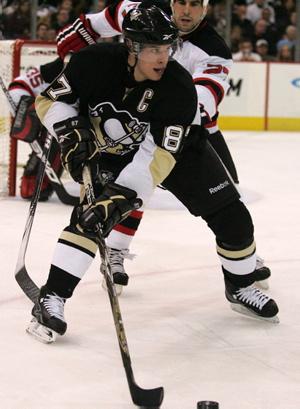The Professional Student Athlete
February 6, 2011 Leave a comment

Fig 1. 13 Iowa football players were hospitalized recently with a muscle disorder, from "Hawkeye Football" (Iowa: Sarah Brew Baker Flickr, 2007)
February 3, 2011
Student athlete is a term that most North Americans have come to understand as more athlete than student.
Why are the top American Collegiate athletes called amateurs, but treated as professionals? They have professional training facilities, professional coaches who get fired if they don’t win, a 24 hour media circus that monitors and analyzes their every move both on and off the field, and a focus on winning not on graduating. The only thing about these elite college athletes that is not professional is the fact that they do not get paid for their services, even though they generate millions of dollars for the schools’ athletic departments. What gives these schools the right to treat their student athletes as if they were already professionals?
This past week 13 Iowa football players were hospitalized for over a week with an unusual muscle disorder termed rhabdomyolosis, following their team’s offseason workouts. The cause of this has not been absolutely determined but it is almost certain that the disorder was due to overexertion during the off season workouts. CNN’s Dr. Sanjay Gupta points out that this disorder has been known to occur after difficult workouts, especially in military boot camps.
It is an incredibly disgraceful display of college sports excess, yet it has received almost no publicity even in the college mad U.S.A. Increasing pressure is an aspect that goes hand in hand with this enlarged stage that the country’s finest college athletes are put on.
This pressure to win is felt not only by the player’s but also the colleges, who pay their respective head coaches millions of dollars. It’s a simple formula really. Head Coaches are paid to win, winning means money and money, well money is good.
Colleges exploit their “students” who are allowed nothing more than a scholarship, but are forced to carry the burdens of a professional athlete. They don’t care for the well-being of their athletes…err students and through their selfish motives could be costing lives to young men.
Even though no one was killed in this recent incident at Iowa, it should signal the need for change in the way in which our culture treats and thinks about student athletes.
Unfortunately, this isn’t the first time the safety of college athletes has taken a backseat to the ultimate goal of winning. Last December, Texas Tech Raiders head coach Mike Leach was suspended by the school for allegedly isolating a player in a dark closet for refusing to play with a concussion. Mike Leach was fired for his actions, but, if his record had been 11 and 2 rather than 8 and 5, the penalty would almost certainly have been much less.
Colleges and college coaches should treat their student athletes and students first and athletes second.

Fig 2. Deceased Notre Dame student cameraman Declan Sullivan, from "Declan D. Sullivan" (Indiana: Mike Miley Flickr, 2010)
What about Notre Dame’s Declan Sullivan? He was a student camera man who died earlier this year after the tower from which he was filming the football team’s practice collapsed under extreme, high wind weather conditions that the coach had deemed safe. Everyone could see that it was dangerous for the student to climb the high tower, but instead of opting to protect his student, Coach Brian Kelly decided it was more important that the almost meaningless task of filming a team practice was completed. Captain Queeg would have been proud.
Although this one incident doesn’t deal specifically with the exploitation of a student athlete per se, it does show what outrageous lengths Colleges will go to in order to be the best prepared to win.
The NCAA is content to give these athletes very little, which I guess is right in line with the amount of protection they provide to their prized athletes. They set limits towards how much team’s are supposed to practice but these rules are often broken by Colleges without ramifications.
Only the lucky few of these student athletes will continue with a professional sports career. We have to make sure that these student athletes who will go on to become accountants or teachers or engineers aren’t ruined before they have the opportunity to continue with their regular lives.



